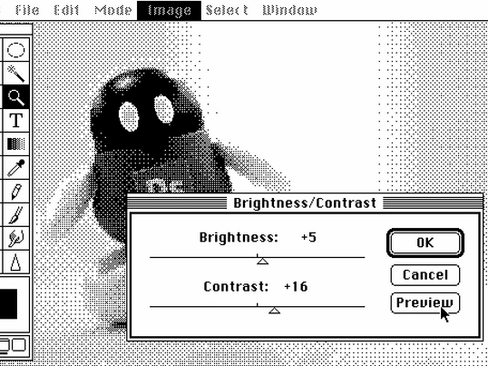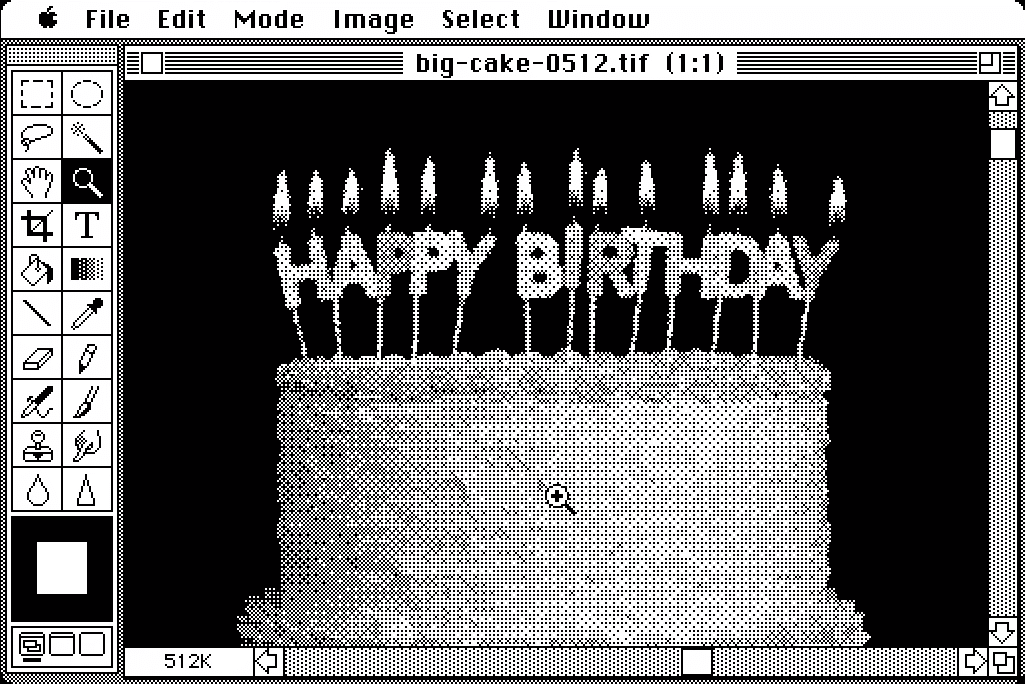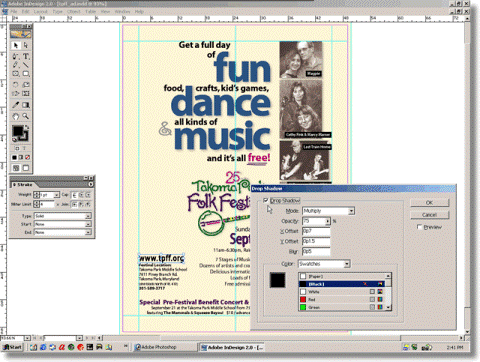The Evolution of Graphic Design Software: From Pre-Press Pioneers to Digital Dominance
- Indexx Inklings
- Jun 24
- 6 min read

How Desktop Publishing Revolutionized the Printing Industry
The relationship between graphic design software and the printing industry has been one of constant evolution, marked by technological breakthroughs that transformed how we create, prepare, and produce printed materials. For printing professionals at companies like Indexx Printing, understanding this evolution isn't just historical curiosity—it's essential knowledge that informs every aspect of modern prepress workflow and quality control.
Before Adobe: The Foundation Years
(1980s-Early 1990s)
The story of modern graphic design software begins not with Adobe, but with pioneering companies that recognized the potential of desktop publishing. Before the mid-1980s, professional typesetting and layout required expensive, specialized equipment manually operated by trained technicians. The printing industry relied heavily on phototypesetting machines, manual paste-up techniques*, and camera-ready artwork that took considerable time and expertise to produce.
(*In the 1980s, phototypesetting and manual paste-up were standard for creating printed materials. Phototypesetters produced text images on film or photosensitive paper, and paste-up involved manually arranging these elements onto a board for page layouts.)
The revolution began in 1985 when Aldus Corporation released the first version of PageMaker in January 1985, with Adobe's PostScript providing the foundational page description language. PageMaker was the first consumer-use desktop publishing software.

This moment marked the birth of desktop publishing (DTP), a term coined by Aldus founder Paul Brainerd. Initially released only for Macintosh, PageMaker democratized professional layout design by bringing sophisticated typography and page composition tools to personal computers.
PageMaker's significance to the printing industry cannot be overstated.
For the first time, designers and print shops could create publication-quality layouts without investing in expensive typesetting equipment. The software's integration with PostScript technology meant that what appeared on screen could be accurately reproduced on PostScript-compatible printers and imagesetters—a crucial development for prepress workflows.

QuarkXPress emerged as PageMaker's primary competitor, quickly establishing itself as the professional standard for magazine and newspaper publishing. QuarkXPress 3.0, released in 1990, offered advanced typography controls and precise layout capabilities that made it indispensable for commercial printing operations. Many print shops standardized their workflows around QuarkXPress, developing expertise in its color separation capabilities and prepress optimization features.
Adobe Enters the Scene: Sets the Foundation
(1994- Early 2000's)
Adobe's entry into layout software came through acquisition rather than innovation. Adobe Systems purchased Aldus in 1994 and continued releasing PageMaker until version 7.0 in 2001. However, Adobe's real strength lay in its comprehensive approach to creative software development, building an ecosystem of interconnected applications that would eventually dominate the industry.
Adobe Illustrator, released in 1987, and Adobe Photoshop, released in 1990, were groundbreaking software that redefined the quality and complexity of images that could be created for print. These applications addressed specific needs in the printing workflow: Illustrator for vector graphics and logos that could scale infinitely without quality loss, and Photoshop for sophisticated image editing and color correction essential to professional printing.
For printing professionals, these early Adobe applications represented a paradigm shift. Illustrator's PostScript-based vector graphics ensured clean, scalable artwork perfect for everything from business cards to billboards. Photoshop's advanced color management and separation capabilities allowed for precise control over CMYK printing processes, while its layered editing system enabled non-destructive workflow practices that became industry standard.
The Creative Suite Revolution: Integration and Workflow Optimization
(2000's - Onward)
The launch of Adobe Creative Suite in 2003 marked a pivotal moment for both graphic design and printing industries. Creative Suite gave users a compelling reason to adopt InDesign, bundling it with Photoshop and Illustrator at just over half the price of QuarkXPress alone. This strategic pricing, combined with superior integration between applications, fundamentally altered the competitive landscape.
Adobe InDesign, released in 1999, built upon the legacy of Aldus PageMaker while introducing features tailored to modern publishing needs. As the first Mac OS X-native desktop publishing software in 2002, InDesign supported Unicode for text processing and offered superior PDF export capabilities. These technical advantages proved crucial for international printing projects and cross-platform compatibility.
For commercial printers, this integration meant more reliable file delivery and fewer technical issues during production.
The integration between Creative Suite applications transformed prepress workflows. Designers could now edit a Photoshop image, update an Illustrator logo, and see changes automatically reflected in their InDesign layout. This seamless connectivity reduced production time, minimized errors, and improved consistency across print projects.
The Impact on Prepress and Print Production
The evolution of graphic design software fundamentally transformed prepress operations. Traditional film-based workflows gave way to direct-to-plate and digital printing processes that relied heavily on software-generated files. Modern prepress workflows depend on the precise color management, font handling, and PDF generation capabilities that evolved through decades of software development.
Contemporary printing operations benefit from software features that were unimaginable in the early days of desktop publishing. Advanced color management systems ensure consistent reproduction across different devices and printing conditions. Automated preflight checking identifies potential problems before files reach the press, reducing waste and improving efficiency. Variable data printing capabilities enable personalized marketing materials and on-demand production that would have been prohibitively expensive with traditional methods.

The software evolution also democratized design quality. While early desktop publishing often resulted in amateur-looking materials, today's software includes sophisticated typography engines, professional color management, and intelligent layout assistance that helps users achieve professional results. This democratization expanded the market for printed materials while raising overall quality expectations.
Modern Developments and Future Directions
(2025)
Today's Creative Cloud represents the culmination of decades of software evolution, offering cloud-based collaboration, artificial intelligence-powered features, and seamless integration across desktop and mobile platforms. Features like automatic font activation, cloud library synchronization, and real-time collaboration have further streamlined the design-to-print workflow.
The integration of AI and machine learning into design software promises to further revolutionize the industry. Automated layout suggestions, intelligent color matching, and predictive preflight analysis are beginning to appear in professional software, potentially reducing production time while improving quality consistency.
For printing professionals, staying current with software evolution remains crucial. Each new version introduces features that can improve efficiency, reduce costs, or enable new service offerings. Understanding the historical context of these developments helps print professionals make informed decisions about workflow optimization and equipment investments.
The Enduring Partnership
The evolution of graphic design software from simple page layout tools to comprehensive creative ecosystems mirrors the transformation of the printing industry itself. What began as a quest to democratize typography and layout has become an integrated digital workflow that enables everything from business cards to complex packaging designs.
For Indexx Printing, this evolution represents both opportunity and responsibility. The sophisticated tools available today enable higher quality output, faster turnaround times, and more complex projects than ever before. However, maximizing these benefits requires continuous learning and adaptation to new technologies and workflows.
The partnership between graphic design software and printing technology will continue to evolve, driven by advances in digital printing, color management, and automation. Understanding this evolutionary trajectory helps printing professionals anticipate future developments and position themselves for continued success in an increasingly digital marketplace.
As we look toward the future, the relationship between design software and printing technology will likely become even more integrated, with AI-powered design assistance, automated quality control, and predictive workflow optimization becoming standard features. The companies that understand and adapt to these changes will be best positioned to thrive in the evolving landscape of professional printing.
_________________________________________________________________________________
Works Cited
"Adobe Creative Suite: The History." Computerworld, 12 Apr. 2010, www.computerworld.com/article/1547046/adobe-creative-suite-the-history.html.
"Adobe Illustrator vs. Photoshop vs. InDesign – Print Design Guide." Company Folders, 30 Nov. 2023, www.companyfolders.com/blog/adobe-illustrator-vs-photoshop-vs-indesign-print-design-guide.
"Adobe InDesign." Adobe Wiki, Fandom, 10 Mar. 2025, adobe.fandom.com/wiki/Adobe_InDesign.
"Complete History of Aldus Pagemaker." History-Computer, 30 Nov. 2024, history-computer.com/technology/complete-history-of-the-aldus-pagemaker/.
"Design Software History: Aldus PageMaker: Revolutionizing Design with Desktop Publishing in the 1980s." Novedge, 13 Dec. 2024, novedge.com/blogs/design-news/design-software-history-aldus-pagemaker-revolutionizing-design-with-desktop-publishing-in-the-1980s.
"Desktop Publishing (DTP) Turns 25." Markzware, 2 Feb. 2023, markzware.com/flightcheck_archive/aldus-adobe-macromedia-quark-desktop-publishing-turns-25/.
Fuller, Garrett. "Aldus PageMaker: A Look At Early Desktop Publishing." Garrett Fuller, personal.garrettfuller.org/blog/2021/05/24/aldus-pagemaker-a-look-at-early-desktop-publishing/.
"History of Adobe InDesign." MapSoft, 22 Mar. 2024, mapsoft.com/history-of-adobe-indesign.
"Publishing Software Timeline." Vektorgarten, www.vektorgarten.de/publishing-timeline.html.
"The History of Adobe." Information Visualization, 18 Sept. 2021, studentwork.prattsi.org/infovis/labs/timelines/the-history-of-adobe/.
"What Happened to Quark? How XPress Lost the Battle to InDesign." Creative Bloq, 21 Nov. 2023, www.creativebloq.com/features/what-happened-to-quark.
"Why You Shouldn't Use Adobe Illustrator for Prepress." Enfocus Blog, 12 July 2024, blog.enfocus.com/why-you-shouldnt-use-adobe-illustrator-for-prepress.

















